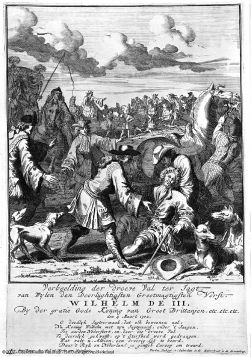
Back Twadde Steedhâlderleaze Tiidrek Frisian Secondo periodo di vacanza dello statolderato Italian Tweede Stadhouderloze Tijdperk Dutch

The Second Stadtholderless Period or Era (Dutch: Tweede Stadhouderloze Tijdperk) is the designation in Dutch historiography of the period between the death of stadtholder William III on 19 March[1] 1702, and the appointment of William IV as stadtholder and captain general in all provinces of the Dutch Republic on 2 May 1747. During this period the office of stadtholder was left vacant in the provinces of Holland, Zeeland, and Utrecht, though in other provinces that office was filled by members of the House of Nassau-Dietz (later called Orange-Nassau) during various periods. During the period the Republic lost its status as a great power and its primacy in world trade. Though its economy declined considerably, causing deindustralization and deurbanization in the maritime provinces, a rentier-class kept accumulating a large capital fund that formed the basis for the leading position the Republic achieved in the international capital market. A military crisis at the end of the period caused the fall of the States-Party regime and the restoration of the Stadtholderate in all provinces. However, though the new stadtholder acquired near-dictatorial powers, this did not improve the situation.
- ^ This is the date from the Gregorian calendar that was followed at the time in the Dutch Republic; according to the Julian calendar, still used in England at the time, the date of death was March 8
© MMXXIII Rich X Search. We shall prevail. All rights reserved. Rich X Search